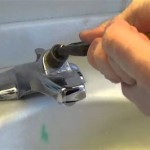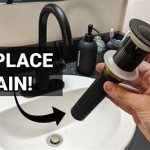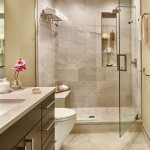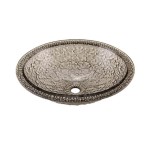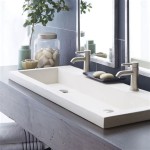Bathroom Sink Drain Won't Fit Into Wall: Troubleshooting and Solutions
Installing a new bathroom sink can significantly enhance the aesthetic and functionality of a bathroom. However, encountering issues during the installation process, particularly with the drain fitting properly into the wall, is a common frustration. This article addresses the potential causes for a bathroom sink drain not fitting into the wall and provides detailed troubleshooting steps and solutions.
When the sink drain doesn't align or connect correctly with the drainpipe within the wall, it can lead to leaks, improper drainage, and potential water damage. Identifying the underlying reason is the first step toward resolving this problem. Several factors can contribute to this issue, ranging from incorrect measurements and incompatible parts to obstructions within the existing plumbing system.
Identifying Common Causes: Misalignment and Incompatibility
One of the most frequent reasons for a drain not fitting properly is misalignment. This can stem from several sources. Firstly, the rough-in plumbing – the pipes installed behind the wall during initial construction or renovation – may not be precisely positioned for the new sink. Building codes and standard practices aim for consistent placement, but variations are possible, especially in older homes where plumbing standards may have differed. Secondly, the sink itself may have slight dimensional differences compared to the previous one, causing the drain outlet to be in a different location relative to the wall.
Incompatibility of parts is another major contributor. Different sink drains, tailpieces, and P-traps are designed with varying dimensions and connection types. Mixing and matching parts from different manufacturers or using components not specifically intended for the sink being installed can lead to fitment issues. For example, a drain tailpiece with the wrong diameter or threading will not properly connect to the P-trap or the drain outlet in the sink. Similarly, a P-trap with an offset that doesn't match the distance to the wall drainpipe will prevent a secure and leak-proof connection.
Furthermore, the type of drainpipe material can also play a role. Copper, PVC, and ABS are common materials, and each requires specific fittings and joining methods. Attempting to connect dissimilar materials without the correct adapters can result in a faulty connection that is prone to leaks and eventual failure. It is crucial to ensure that all components are compatible with the existing drainpipe material and that the appropriate joining techniques, such as solvent welding for PVC or soldering for copper, are employed correctly.
Diagnosing the Specific Problem: Inspection and Measurement
Before attempting any solutions, a thorough inspection and accurate measurements are essential. Begin by visually inspecting the drainpipe within the wall. Look for any obstructions, such as debris, mineral buildup, or damage to the pipe itself. A flashlight can be helpful for illuminating the inside of the pipe. Also, check for any signs of previous repairs or modifications that might be affecting the alignment or diameter of the pipe.
Next, carefully measure the distance from the sink drain outlet to the wall drainpipe. Measure horizontally (the offset) and vertically (the height). These measurements will determine the required length and configuration of the drain tailpiece and P-trap assembly. It is crucial to measure accurately, as even small discrepancies can prevent a proper fit. Use a reliable measuring tape and double-check all measurements to minimize errors.
Compare the measurements with the dimensions of the drain components you intend to use. Check the specifications provided by the manufacturer to ensure that the tailpiece and P-trap have sufficient adjustability to accommodate the required offset and height. If the measurements reveal a significant difference between the sink outlet and the wall drainpipe, it may be necessary to consider alternative solutions, such as using adjustable drainpipes or modifying the wall plumbing. It is often helpful to take pictures of the existing plumbing setup and the new sink to document the problem and facilitate communication with a plumber or hardware store professional.
Implementing Solutions: Adjustments, Extensions, and Alterations
Once the cause of the problem has been identified and accurate measurements have been taken, several solutions can be implemented to address the issue. The choice of solution will depend on the specific circumstances, including the degree of misalignment, the type of plumbing materials involved, and the available space.
Adjustable Drainpipes and Extensions: Adjustable drainpipes and P-traps are designed to provide flexibility in connecting the sink drain to the wall drainpipe. These components typically feature telescoping or swivel joints that allow for minor adjustments in length and angle. They can be particularly useful when the misalignment is only slight. Extensions can also be used to increase the length of the drain tailpiece or P-trap, allowing for a greater reach to the wall drainpipe. However, it is important to ensure that the extensions are properly sealed and secured to prevent leaks.
Offset Drain Adapters: In cases where the sink drain outlet is significantly offset from the wall drainpipe, an offset drain adapter may be necessary. These adapters are designed to change the horizontal or vertical position of the drainpipe, allowing for a more direct connection. Offset drain adapters are available in various configurations and materials, so it is important to choose one that is compatible with the existing plumbing system and provides the necessary offset. Careful measurement and planning are essential when using offset drain adapters to ensure that the resulting connection is secure and leak-proof.
Modifying Wall Plumbing: In situations where the misalignment is severe or the existing plumbing is damaged or deteriorated, it may be necessary to modify the wall plumbing. This typically involves cutting and repositioning the drainpipe within the wall to align with the sink drain outlet. This task should ideally be performed by a licensed plumber, as it requires specialized tools, knowledge of plumbing codes, and the ability to properly join and seal the pipes. Modifying wall plumbing can be a more invasive solution, but it may be the only way to ensure a proper and long-lasting connection in certain cases. Before undertaking any modifications to the wall plumbing, it is essential to obtain any necessary permits and consult with a qualified professional.
Using Flexible Drainpipes: Flexible drainpipes are corrugated plastic pipes that can bend and flex to accommodate misalignments. While they offer convenience, they are generally not recommended for permanent installations due to their tendency to trap debris and their increased risk of leaks. If a flexible drainpipe is used as a temporary solution, it should be replaced with a more rigid and permanent connection as soon as possible.
Addressing Obstructions: If an obstruction is suspected within the wall drainpipe, it should be removed before attempting any other solutions. Minor obstructions can sometimes be dislodged using a plumber's snake or a wire hanger, but more severe blockages may require the use of a drain cleaning machine or the services of a professional plumber. Clearing the obstruction will ensure proper drainage and may resolve the fitment issue if the blockage was preventing the drainpipe from aligning correctly.
Ensuring Proper Sealing: Regardless of the solution chosen, it is crucial to ensure that all connections are properly sealed to prevent leaks. Use Teflon tape or pipe dope on threaded connections, and ensure that all compression fittings are tightened securely. For solvent-welded connections, use the appropriate primer and cement, and follow the manufacturer's instructions carefully. After completing the installation, test the drain thoroughly by running water into the sink and checking for any leaks around the connections. If any leaks are detected, tighten the connections further or reapply sealant as necessary. It is always better to err on the side of caution and double-check all connections to ensure a leak-free installation.
Throughout the entire process, safety precautions are paramount. Turn off the water supply before disconnecting any plumbing. Wear safety glasses to protect your eyes from debris. If using power tools, follow the manufacturer's instructions and wear appropriate safety gear. If you are not comfortable performing any of these tasks yourself, it is best to consult with a licensed plumber. A professional plumber has the expertise and experience to diagnose the problem accurately and implement the appropriate solution safely and efficiently.

How To Install A Pipe From Sink Drain Wall Ehow

Bathroom Sink Plumbing Installation Diy Montreal

How To Fit A Bathroom Sink Diy Guides Victorian Plumbing

How To Install A Flexible Waste Pipe When The Drain Doesn T Line Up Handyman S Daughter

5 Ways To Conceal A Waste Pipe Under Vanity The Plumbette
I Closed My Sink Drain Stopper And Now It Won T Open Again Is There Any Way That Can Repair This Without Hiring A Plumber Quora

Help Hiding Pipes In Downstairs Toilet Houzz

4 Ways To Seal A Sink Drain Pipe

The 10 Most Common Plumbing Mistakes Diyers Make

How To Fix A Bathroom Sink That Won T Drain Bfp Bay Area
Related Posts
